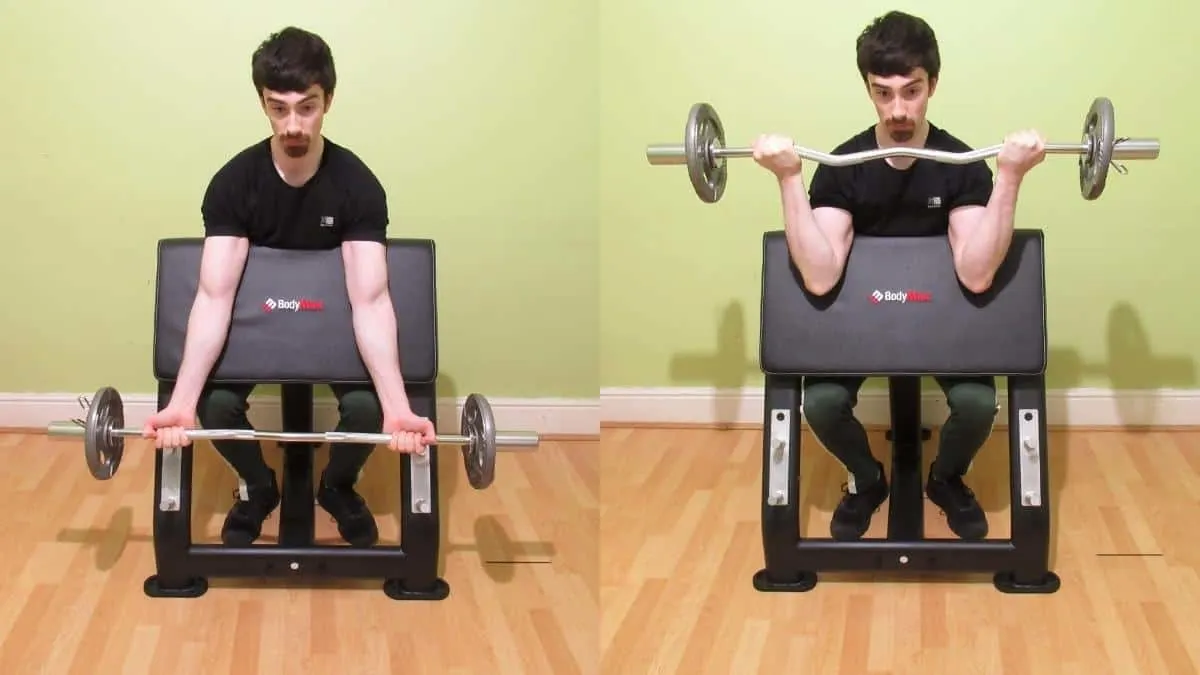The bicep anatomy consists of two heads; an inner head and an outer head. The wide grip preacher curl primarily works the short (inner) head of the biceps, which will help to make your arms look bigger when they’re flexed.
This guide explains how to do preacher curls with a wide grip so that you can get thicker arms. You’ll then learn the three main mistakes that you need to avoid if you want to get the most from this underrated exercise.
Wide grip preacher curl exercise details
- Main Muscles: Biceps brachii
- Secondary Muscles: Brachioradialis, brachialis, forearm flexors
- Exercise Type: Strength
- Exercise Mechanics: Isolation
- Difficulty Level: Beginner
- Equipment Needed: Barbell, preacher pad, weight discs.
How to do wide grip preacher curls correctly
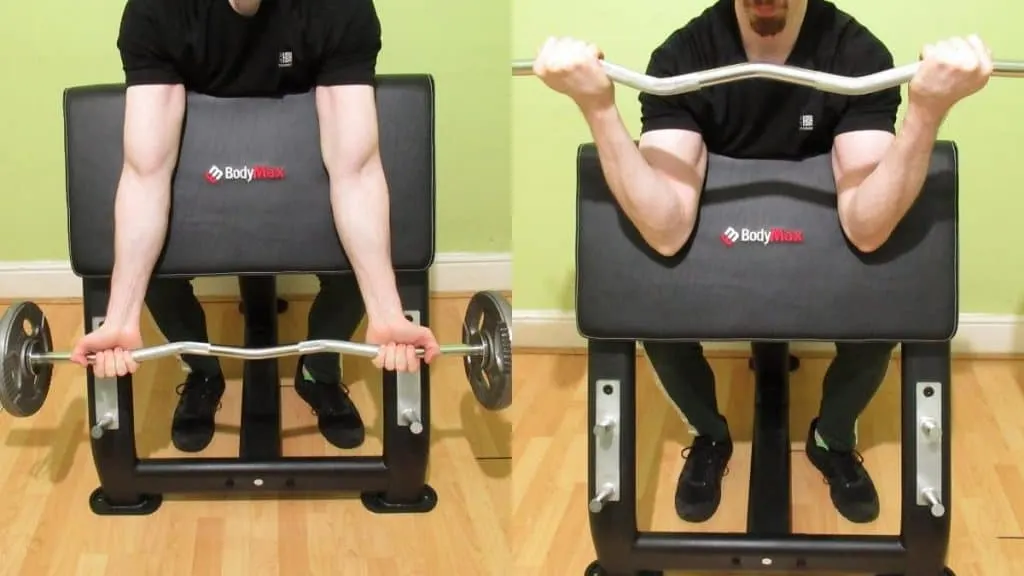
- Load an appropriate amount of weight onto a barbell or an EZ bar. For more convenience, use a fixed bar.
- Place the bar in the preacher curl station’s rack.
- Sit on the preacher curl station’s seat.
- Brace your arms against the sloped side of the pad so that the very top of the padding is underneath your armpits.
- Grab the bar a few inches outside shoulder-width.
- Curl the weight toward your front delts until your biceps and forearms make forceful contact.
- Lower the bar under control until your elbows are completely extended.
- Repeat for 3-5 sets of 6-12 reps.
Wide grip preacher curl mistakes
Some of these mistakes also apply to the traditional standing preacher curl. However, the first mistake is unique to wide grip preacher curls, and it’ll seriously weaken your biceps if you make it a habit.
Using an excessively wide grip
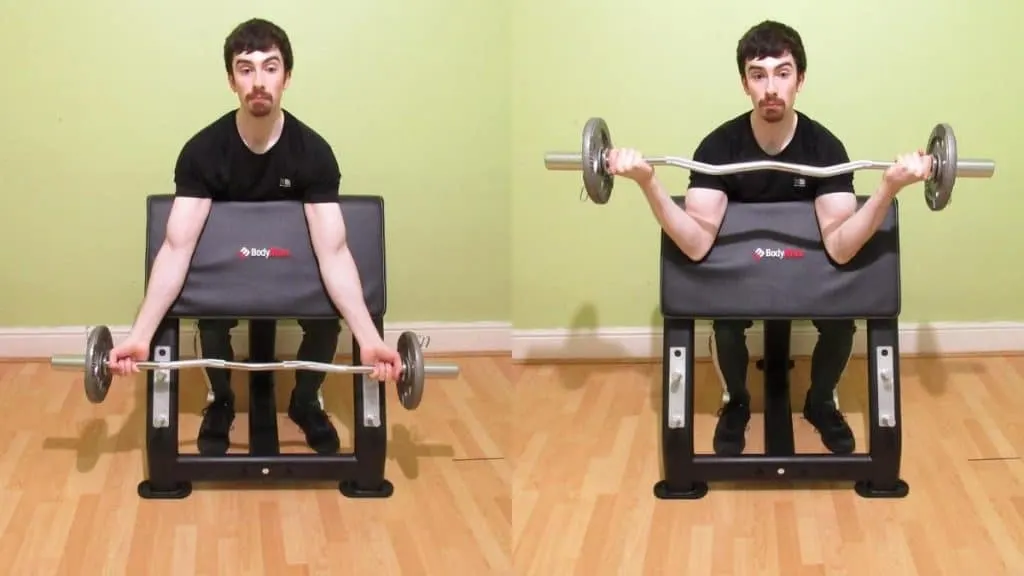
Many lifters erroneously believe that they should hold the bar with the widest possible grip. But despite the name of the exercise, it’s not a case of the wider, the better. However noble their intentions may be in trying to perform the movement correctly, using an excessively wide grip will actually make them weaker because their biceps won’t be able to contract as effectively.
Instead, grip the bar slightly outside shoulder width. This positioning will be more comfortable for your wrists, and it’ll also allow your biceps to move in a straight line, rather than having to awkwardly curl inward in a diagonal line.
This kind of problem occurs in reverse when people perform the close grip preacher curl. They believe that curling with their hands together will lead to better bicep stimulation, when in fact, the opposite is true. By lifting the weight while your hands are touching, you’re making it harder for your biceps to achieve a proper contraction, which actually reduces the amount of tension that your arms receive.
Using a partial range of motion

Most gym-goers naturally use a full range of motion (ROM) on EZ bar wide grip curls because the end part of the movement—when your elbows are fully extended—is the easiest part of the rep.
But with wide grip preacher curls, the resistance curve is completely different. [1] The final part of the rep is actually the most challenging and thus requires the most exertion from your biceps. So, in order to get the best muscle growth stimulus possible, you need to achieve full elbow extension on every rep.
This is really easy to do if you flex your triceps after each repetition. Since the biceps and triceps work antagonistically, you can be sure that your biceps are getting a proper stretch when you contract your triceps at the end of the rep.
Forgetting about progressive overload
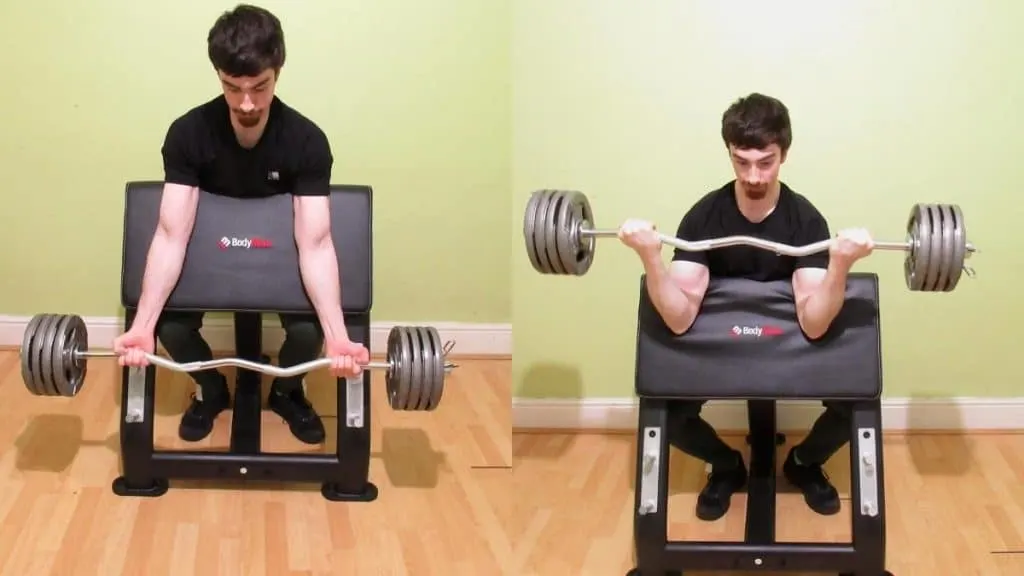
A large majority of lifters use fixed bars when performing exercises like the wide grip preacher curl or the reverse grip preacher curl. And who can blame them?
It’s far easier to grab a fixed barbell off the rack than it is to load a precise amount of weight onto an EZ bar.
The problem arises when you prioritize the convenience of fixed bars at the expense of progressive overload. [2]
By limiting yourself to the increments of the fixed barbell set at your gym, you won’t be gaining strength as quickly as you would if you were using a standard barbell or an EZ bar. This is because fixed bars tend to have larger weight jumps, which in turn makes it harder to gain strength—especially for a relatively small muscle group like the biceps.
The solution is to use a bar that enables you to load your own weight plates onto it. This way, you can increase the resistance in more manageable increments and thus gain bicep strength and size faster.
Related Exercise: Wide grip standing barbell curls
Conclusion: Are wide grip preacher curls worth your while?
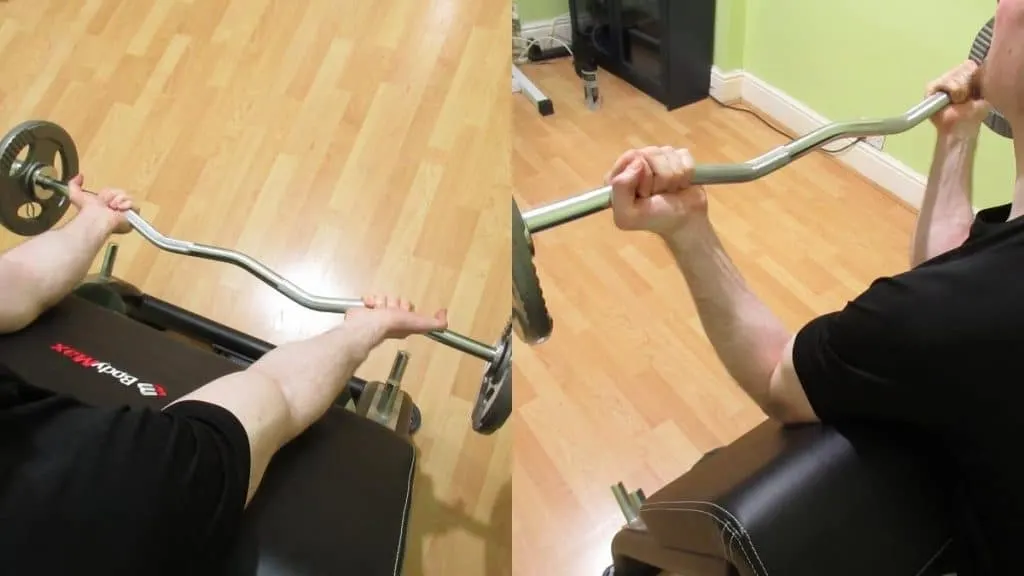
The wide grip preacher curl is a brilliant exercise for beginners and serious bodybuilders alike. It’s a great movement for novices to perform because the preacher pad stabilizes your upper arms, thus making it easier to lift the weight with the correct curling technique.
This is also an advantage for bodybuilders seeking maximum muscle mass because the pad enables you to completely isolate your biceps. In other words, because you’ve sat down with your arms braced against the padding, you can’t swing the weight up with your other muscles as your biceps fatigue, which means that the vast majority of the tension stays on the target areas.
Just be sure to use a moderate and not an excessively wide grip. You can’t completely isolate parts of the biceps; you can only emphasize the different heads by changing your grip. Holding the bar just outside shoulder-width will shift the emphasis onto the inner head while still providing good overall stimulation for the biceps as a whole.
You can also use wide grip preacher curls as a primary exercise because it’s a very effective movement for isolating your biceps. For best results, aim for between 6-12 reps set. This rep range will enable you to gain strength by lifting heavy, but you’ll still be doing enough reps in order to get sufficient time under tension for your biceps.
References
- Beardsley, C. (2021, April 18). How can exercise strength curves affect hypertrophy? Medium. https://sandcresearch.medium.com/how-can-exercise-strength-curves-affect-hypertrophy-906bfb210a88
- Thieme, T. (2020, August 31). How Progressive Overload Maximizes Your Gains. Men’s Health. https://www.menshealth.com/fitness/a33849830/progressive-overload/

